How to Attract Pollinators to Your Garden: Bee-Friendly Plants
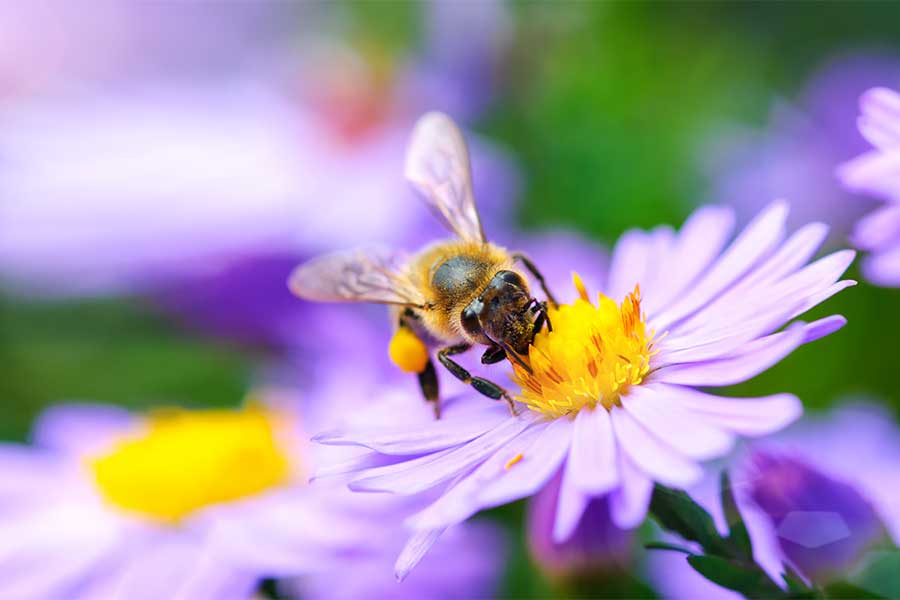
Creating a beautiful garden isn’t just about aesthetics – it’s also about supporting biodiversity. Pollinators like bees, butterflies and insects play a crucial role in our ecosystem, but they are declining at an alarming rate. Thankfully, there are a number of simple things that home gardeners like you can do to support them. From introducing bee-friendly plants to adding nesting spots and water sources, learn how to create a pollinator-friendly garden below.
Why do pollinators matter?
Pollinators such as bees and wasps, moths and butterflies, beetles and even birds, feed on the pollen or nectar produced by flowering plants. As they do so, their bodies pick up loose pollen from the plant’s anther (male organ). Then as they move between plants, they transfer the pollen onto the stigma (female part) of others, facilitating plant reproduction. This is what enables plants to produce fruits and seeds, and ultimately, encourages more plants to grow.
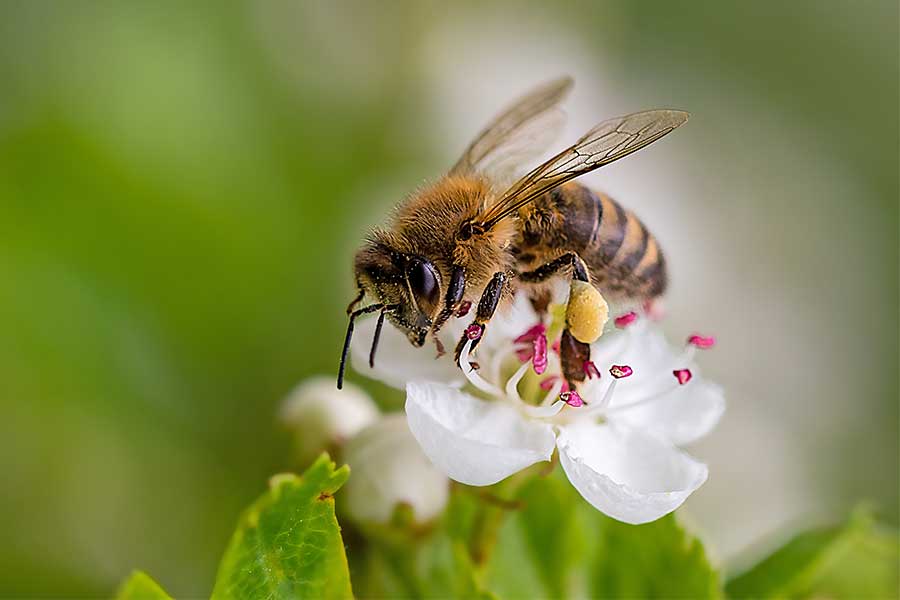
The wind replicates a similar process but less accurately. With that in mind, around 78% of flowering plants need the help of pollinators. The problem is that bees and similar creatures are facing various threats including habitat loss, pesticide use and climate change. As such, having a bee-friendly garden has never been more important! So, if you’d like to maintain healthy borders, boost your crop yields or simply promote garden biodiversity, keep reading…
How to create a pollinator-friendly garden
Choose bee-friendly plants
When choosing the best plants for bees, you should stick to nectar-rich plants that are native to the UK. Perennials are ideal and there are countless varieties and colours available, including lavender, foxglove, echinacea, geraniums and crocuses. Shrubs like heather and buddleia (butterfly bush) are also good picks for pollinators due to their bee-friendly flowers.
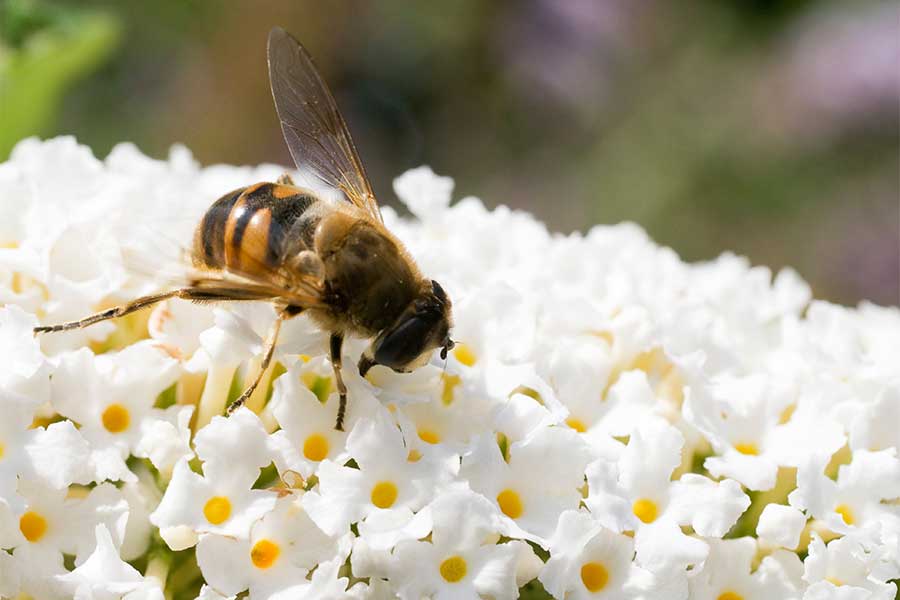
The same can be said for fruit trees, herbs and wildflowers such as poppies and cornflowers. You could even plant your own wildflower meadow in a spare corner of your garden! Our Sutton Seeds range includes several options that are easy to plant and require very little maintenance. We also stock a host of popular perennials priced at just £4.49 or 3 for £12.
Incorporate year-round blooms
Another thing to consider when choosing bee-friendly plants is when they’ll flower – something that is constantly changing with rising temperatures. Bees are most active throughout spring, but they also pollinate throughout summer and autumn. As a result, you’ll need to include a mix of seasonal flowers to provide year-round coverage and appeal.
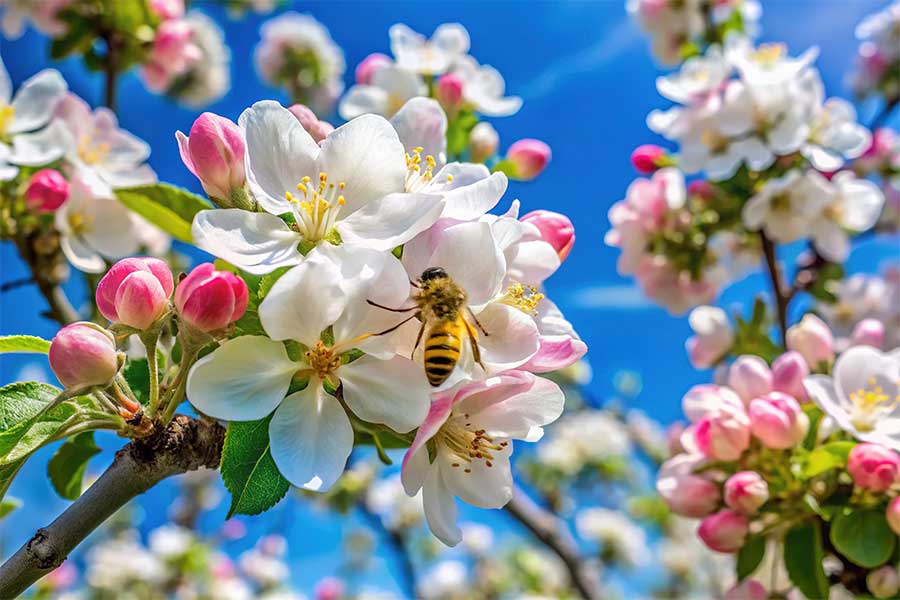
For example, spring blooms like snowdrops, winter aconites and wood anemone can provide an early food source for pollinators. Likewise, hardy spring bedding plants like aubretia and alyssum are perfect for this time of year. Or, if you’re short on space, potted bluebells and crocuses work well too. Now available from just £4.99 at Oxford Garden Centre.
By mid-season, perennials, wildflowers and late flowering plants like climbing honeysuckle and passionflower will be at the forefront. But as temperatures drop into autumn, late-season pollinators such as echinacea, solidago, sedums and even holly will be most useful.
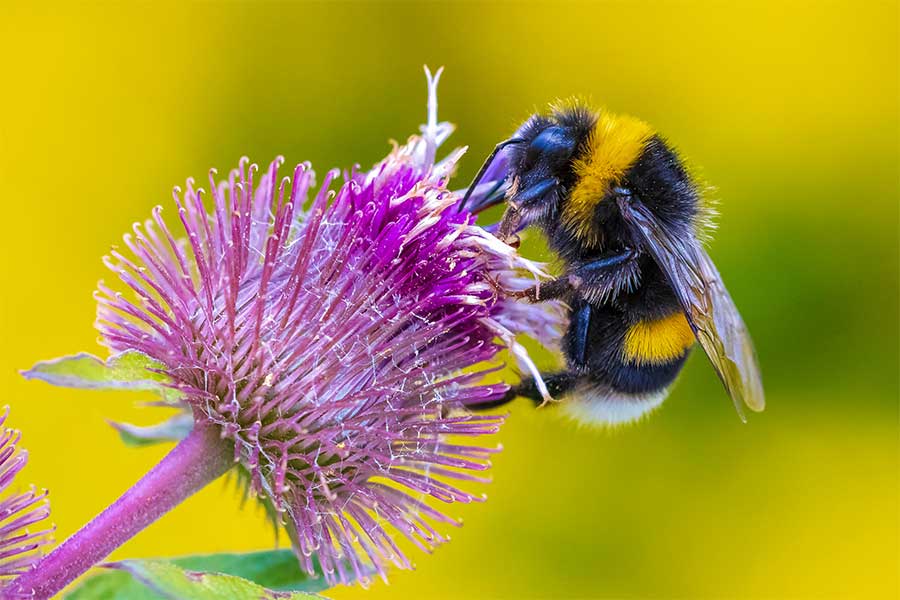
It’s also a good idea to interplant a fruit bush like blueberry or blackcurrant amongst your flowers to add a burst of colour and attract more wildlife. Like the idea? Our new delivery of fruit trees is due mid-February, with sizes to suit all gardens. So check back soon!
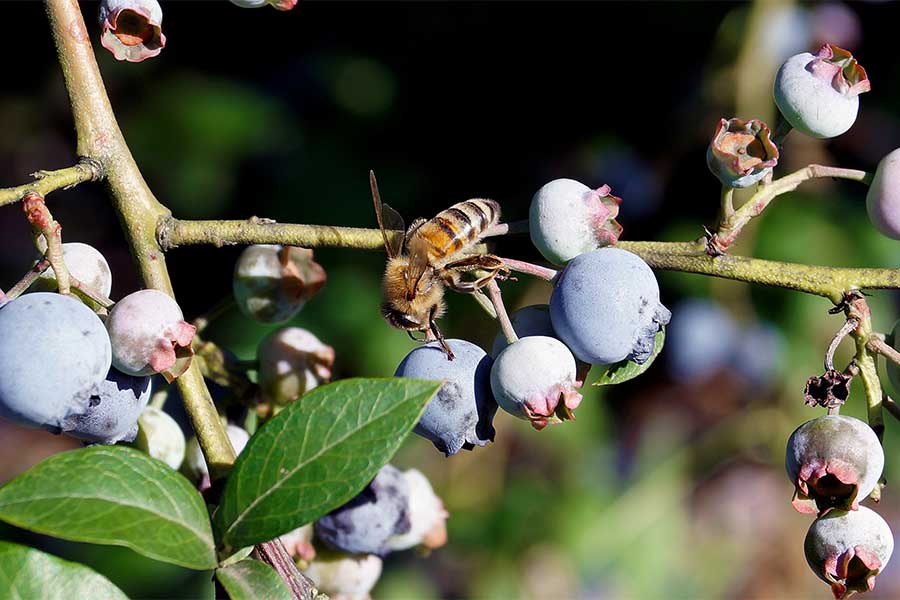
Avoid using weedkiller and pesticides
Though many people like neat, weed-free lawns, dandelions, daisies and buttercups are all great for bees. Some species even like to nest in long grass. So, if you can bear to leave it longer in places (perhaps just in your back garden), then please do! Or you could set aside a separate area for a small wildflower meadow complete with weeds and all. It’s up to you!
If you do want to remove weeds from your garden, avoid using weedkillers, as this can poison visiting wildlife. Pollinators may also transfer the chemicals onto flowers that you want to preserve. Instead, remove weeds by hand wherever possible or look into natural methods. Mulching bare soil, for example, can help to suppress weeds and deter slugs and snails too.
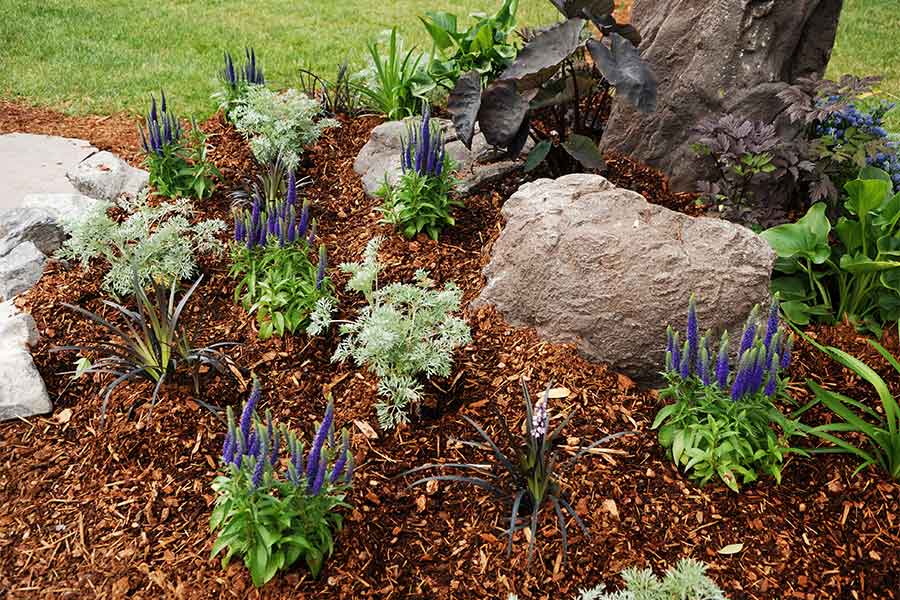
Alternatively, if you’re struggling with pests, you could try to attract natural predators to deal with them. Hoverflies, for instance, are attracted to alyssum. Grow it around your vegetable patch or flowerbeds and they’ll take care of any aphids whilst they’re visiting. Similarly, if you have them in your local area, hedgehogs are great for keeping slugs at bay. Draw them into your garden with a specially made shelter and low-level water feeder, with prices from £44.99.
Designing a bee-friendly garden
Provide shelter
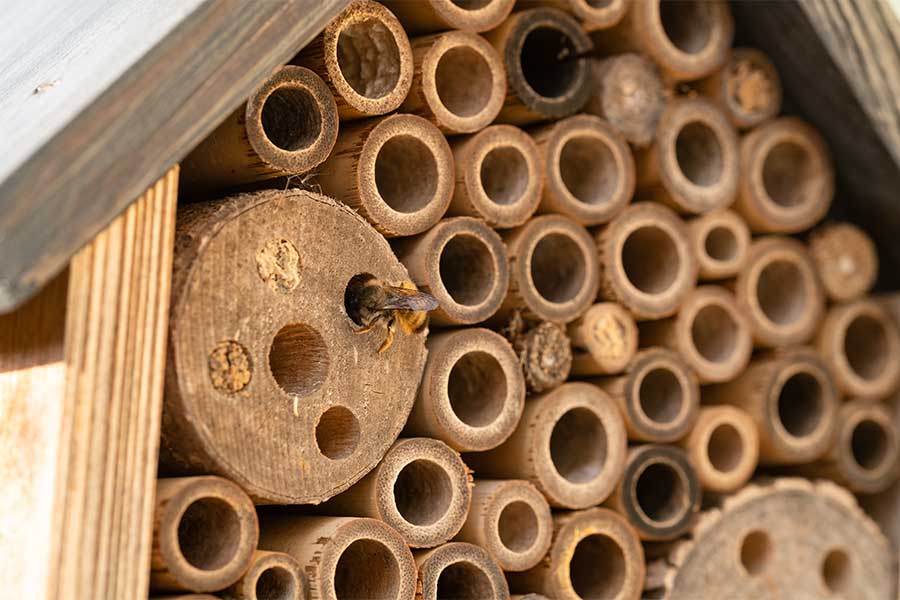
Alongside bee-friendly plants, you should aim to incorporate wildlife shelters and nesting sites into your garden’s design. Bee hotels with hollow tunnels are perfect for Solitary Bees that don’t live in hives. They provide shelter from the rain, a place to lay eggs and somewhere to store food for their young. Others prefer the privacy offered by hedgerows and long grasses when it’s time to nest. Or for hibernation in late autumn-winter. Even log piles and rotting logs with cavities can provide shelter for resting pollinators. Whichever option you choose, just make sure you place it close to flowering plants so they’re easily accessible come spring.
Add water sources
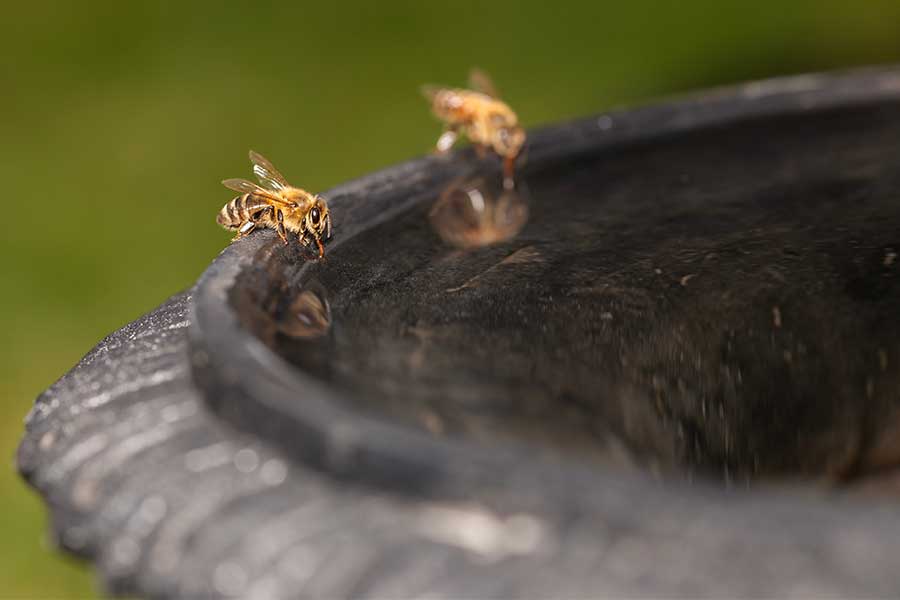
Adding a source of hydration for pollinators is also crucial – especially in the summer months. Small ponds, garden water features and bird baths are popular choices for wildlife-friendly gardens. Just bear in mind that ponds should feature a sturdy plant or rock for bees or insects to stand on and drink from. Placing a potted plant nearby will also make the water source more appealing by adding shade. Browse a range of pots and planters online or in-store, from £5.99 for an 11cm model and £8.99 for a 1 litre pot. Or to keep things simple, you could just add a shallow water tray close to your flowering plants instead.
Create connectivity
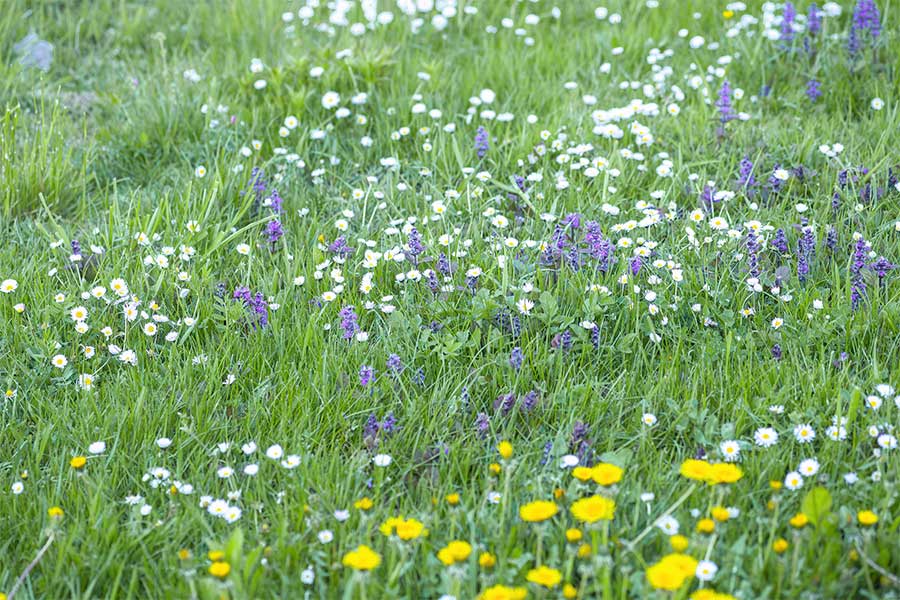
Whatever elements you decide to implement, connectivity is key. The concept of ‘pollinator corridors’ is gaining traction across the UK in an attempt to link up habitats. You may have seen wildflower meadows planted on grass verges beside the road, for example. But home gardens also play a major role in helping bees and other pollinators move from place to place.
Simply providing water and a pesticide-free food source can help them on their way! But to make the life of pollinators even easier, why not link up different areas of your garden? A combination of hedgerows, bee hotels, flowering borders and potted plants can provide both nutrients and habitats as they journey through your garden and beyond. Can’t fit in everything you’d like to? Why not team up with your neighbour to ensure all bases are covered?
Shop bee-friendly plants, seeds, pots and more in store
Whether you have an expansive garden or a small courtyard, Oxford Garden Centre has everything you need to create a bee-friendly garden. Discover water features, mulches and a selection of pots on our website. Or visit the store to browse our full range of wildlife-friendly shrubs, fruit bushes and flowers for bees.
We’re open 7 days a week and offer free delivery throughout Oxford regardless of spend, so feel free to stock up! Our friendly team will also be on hand to provide further advice if needed.
